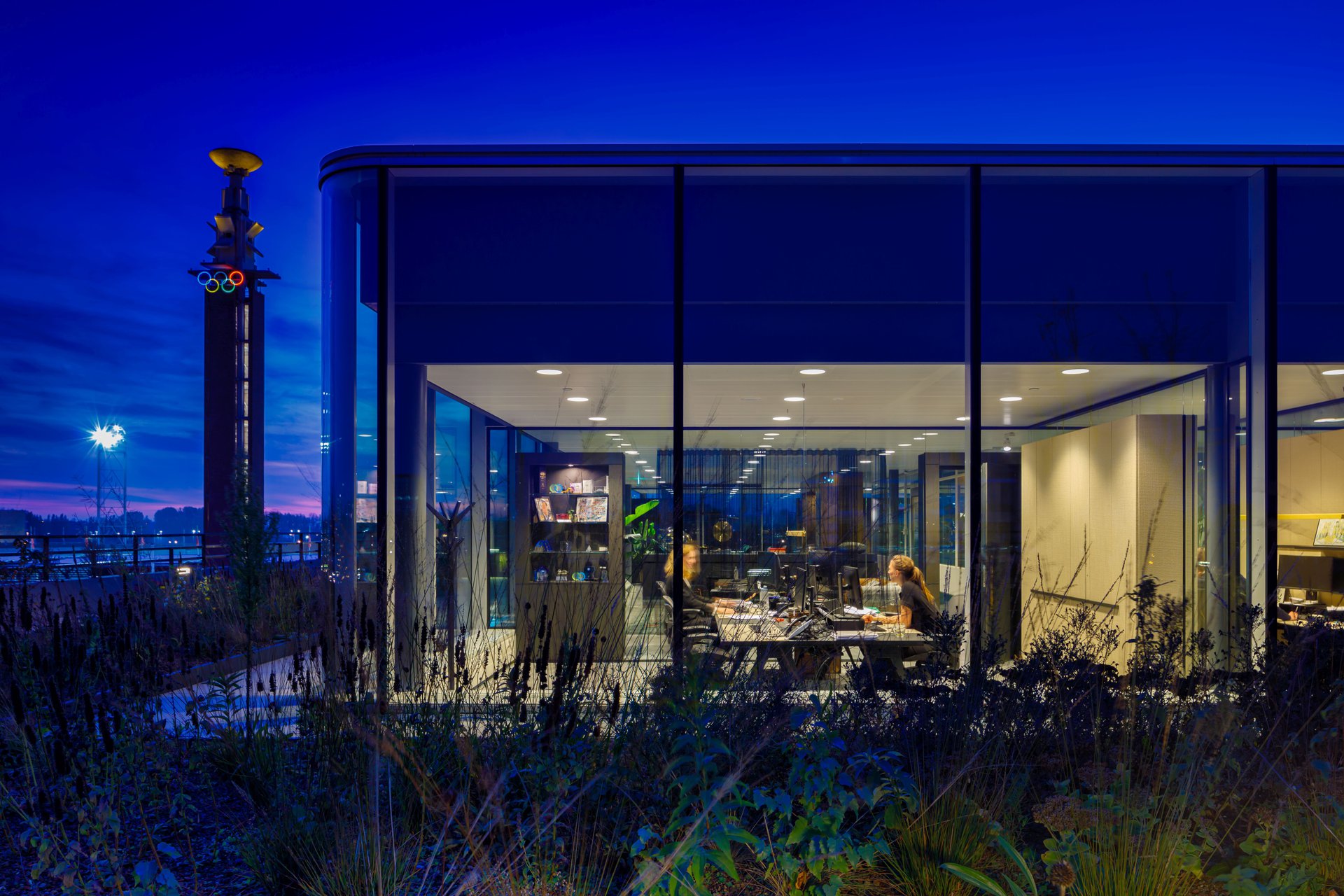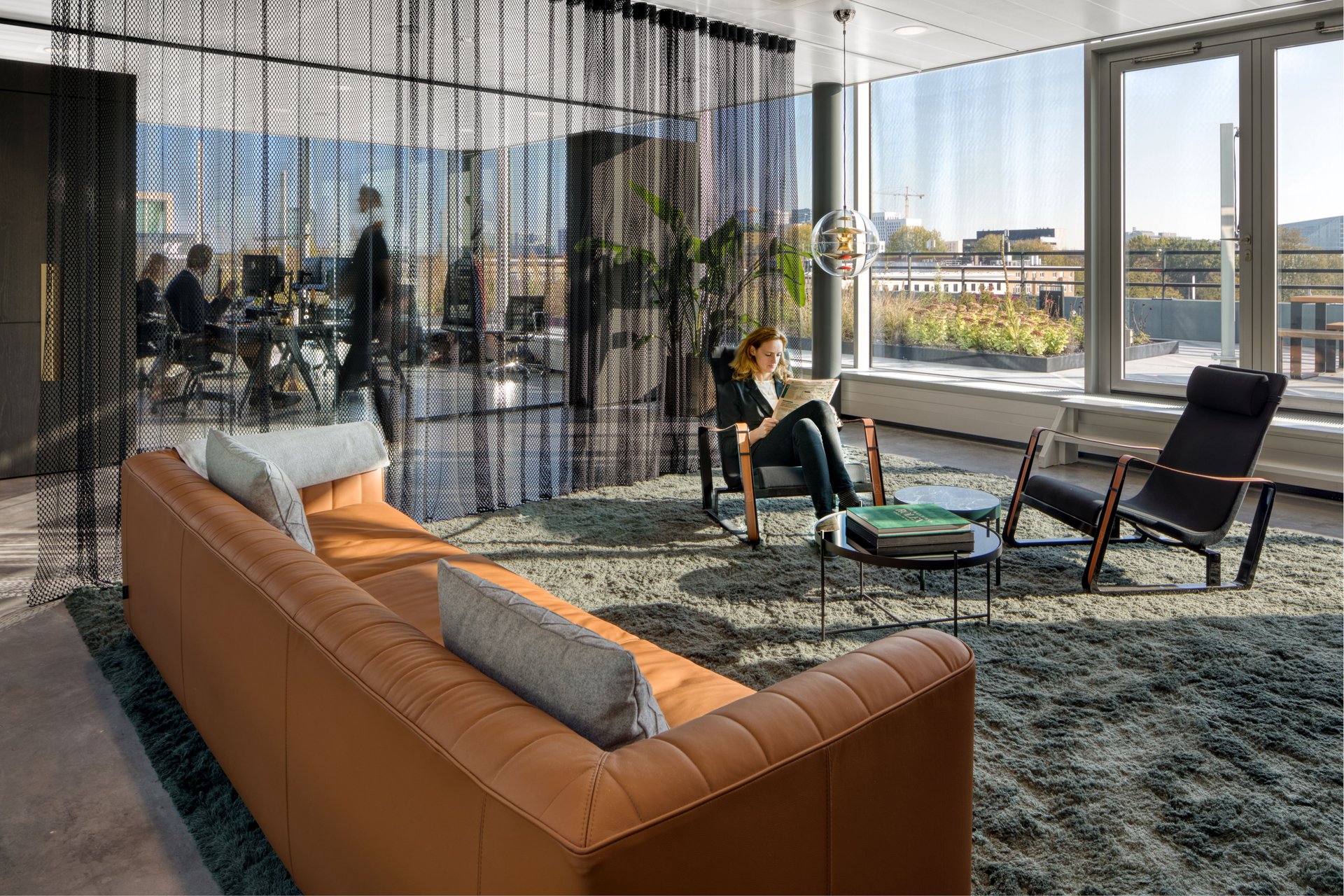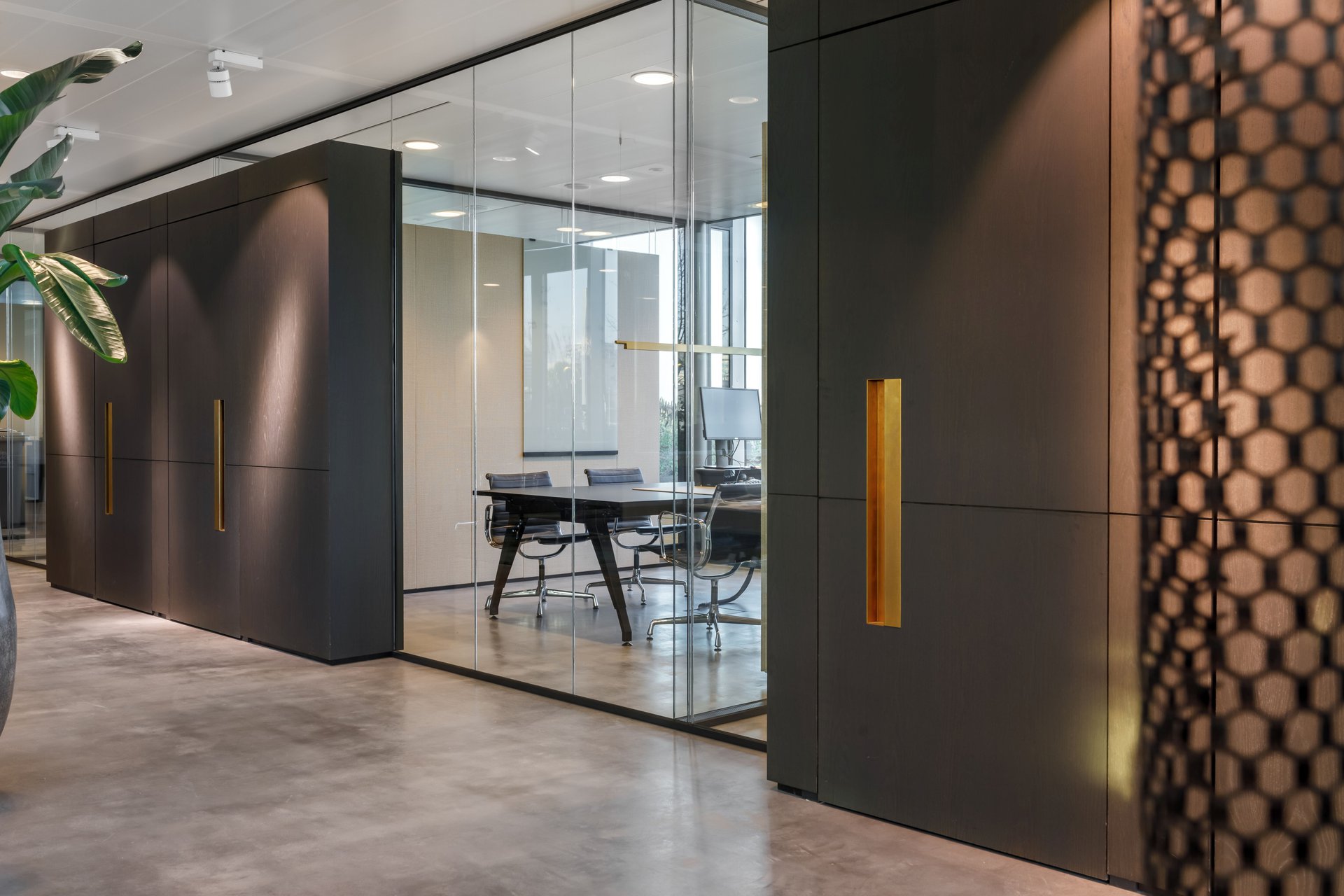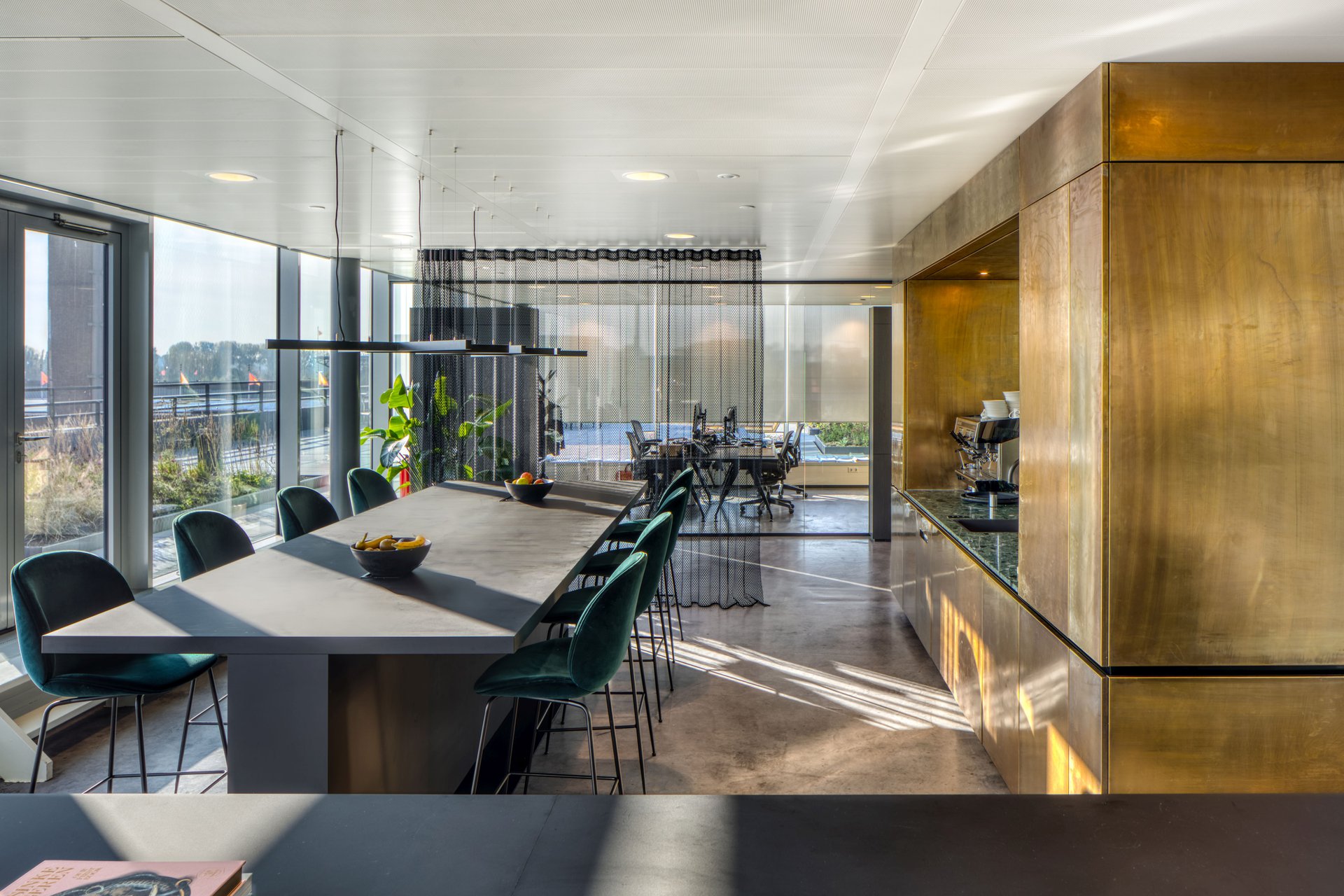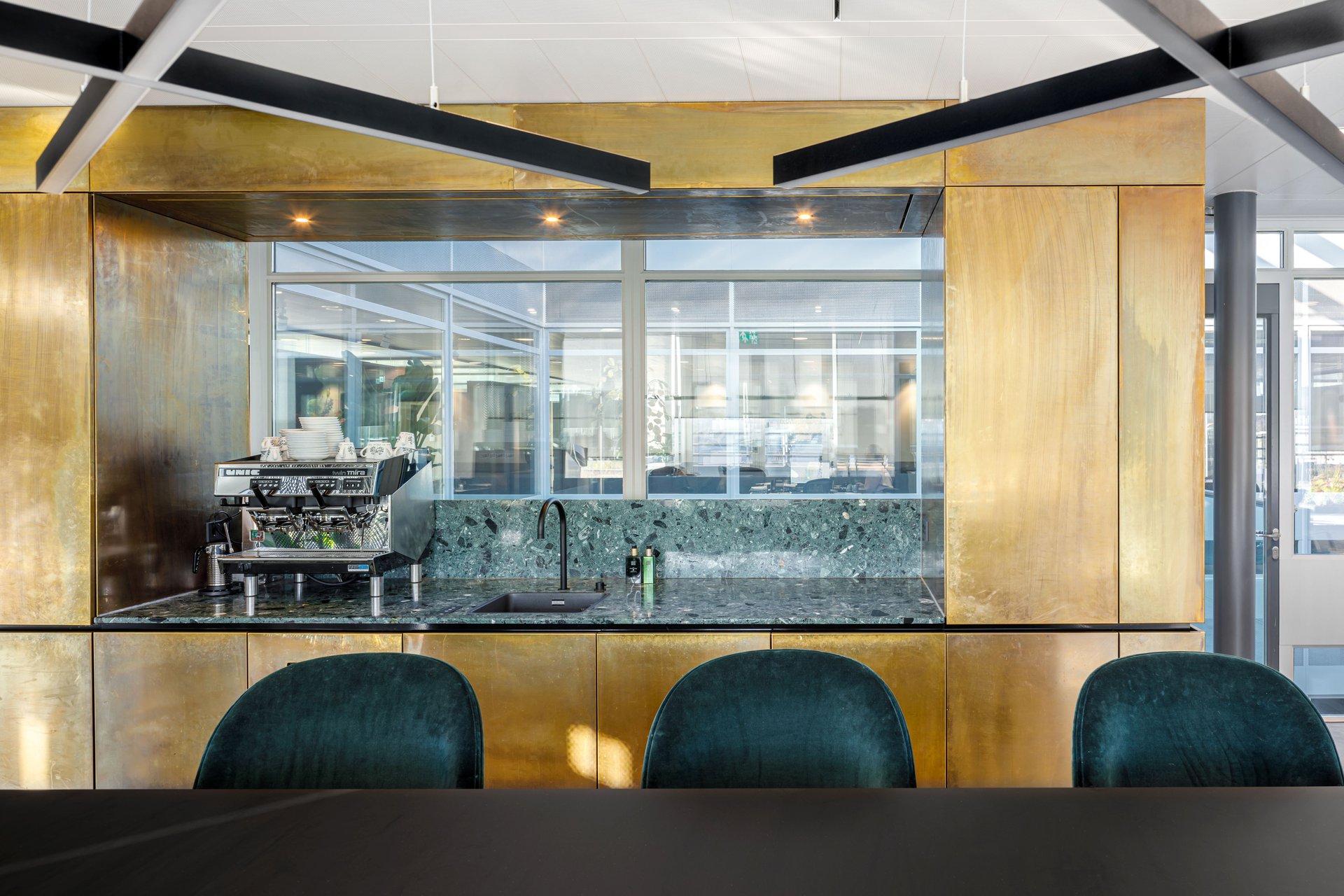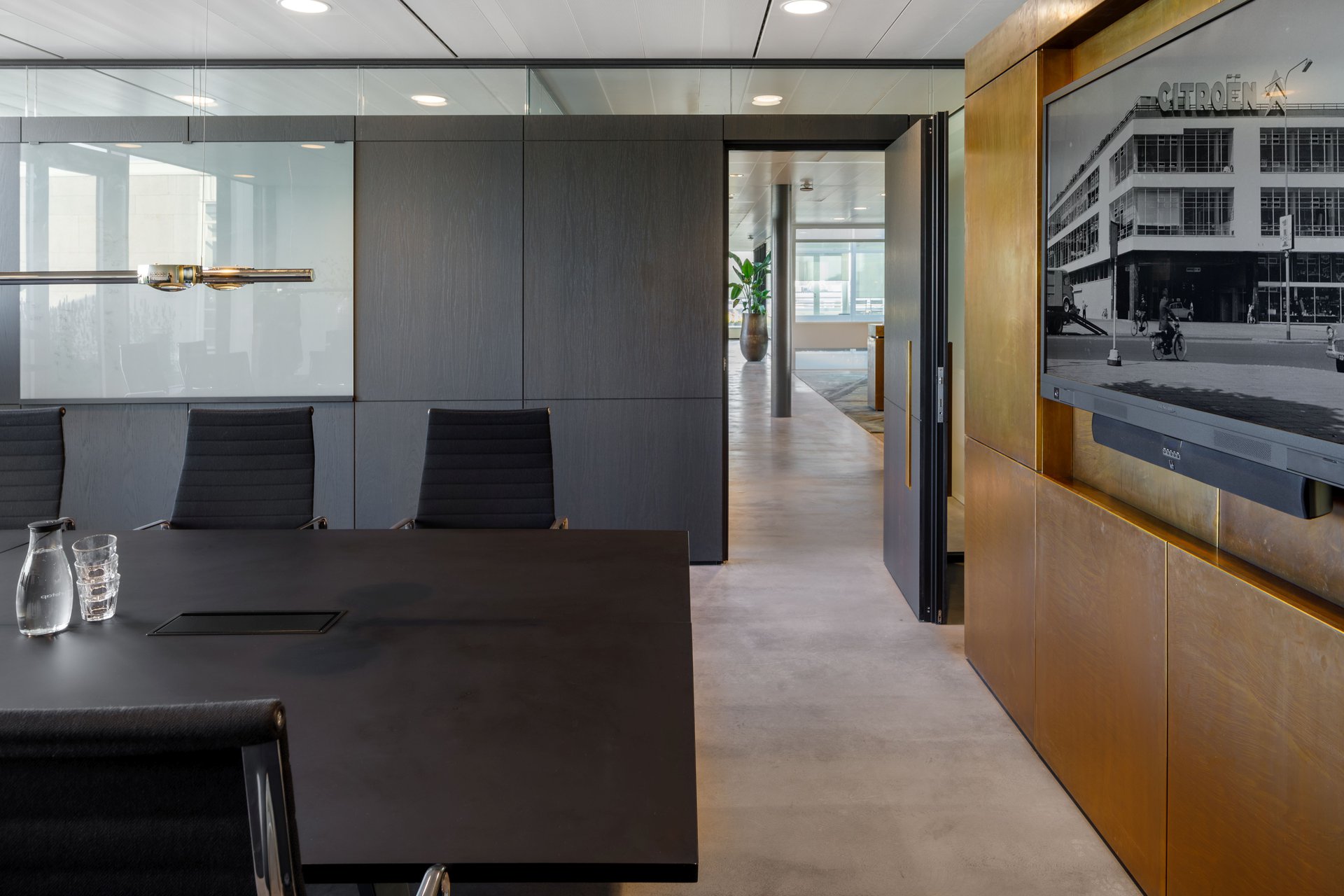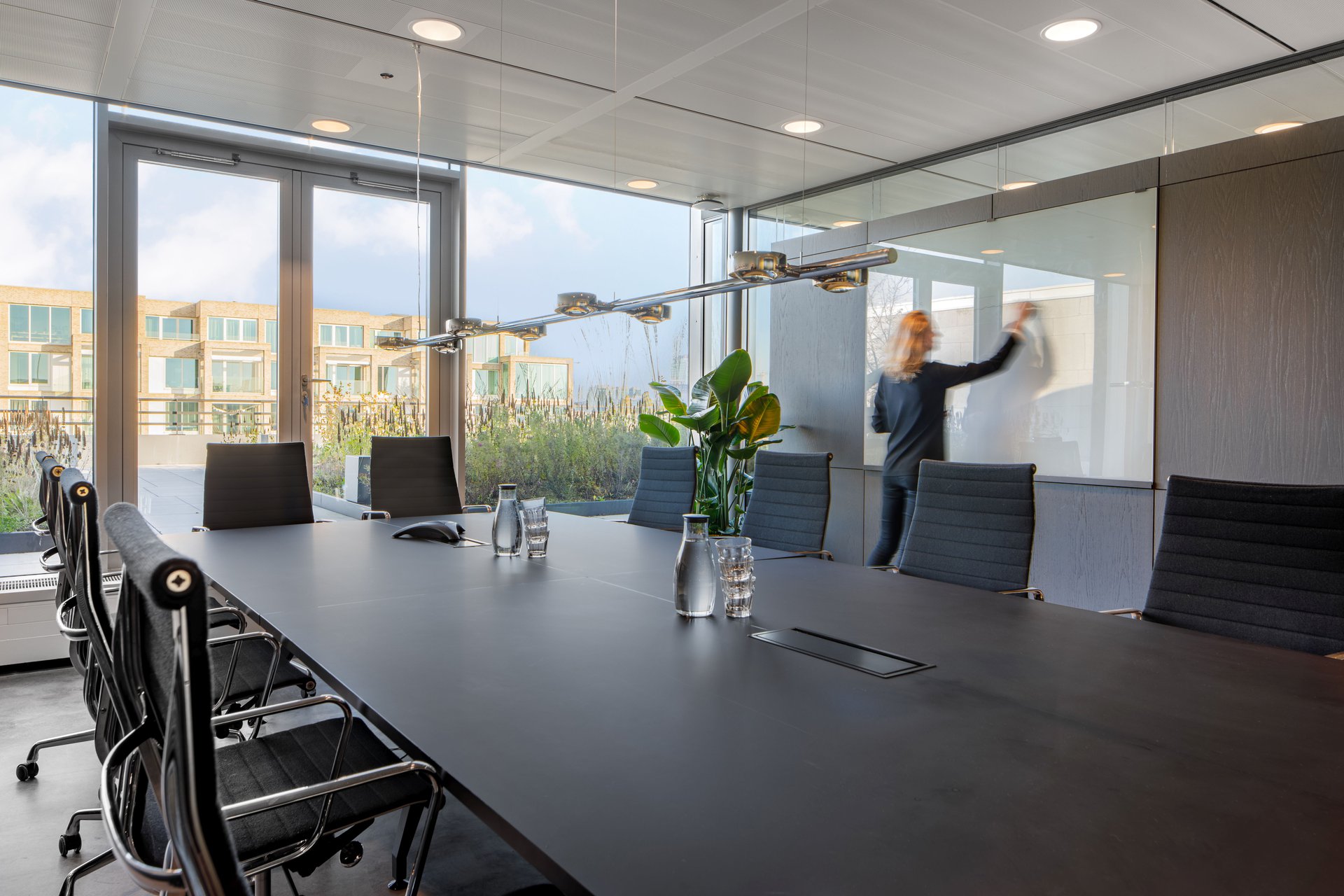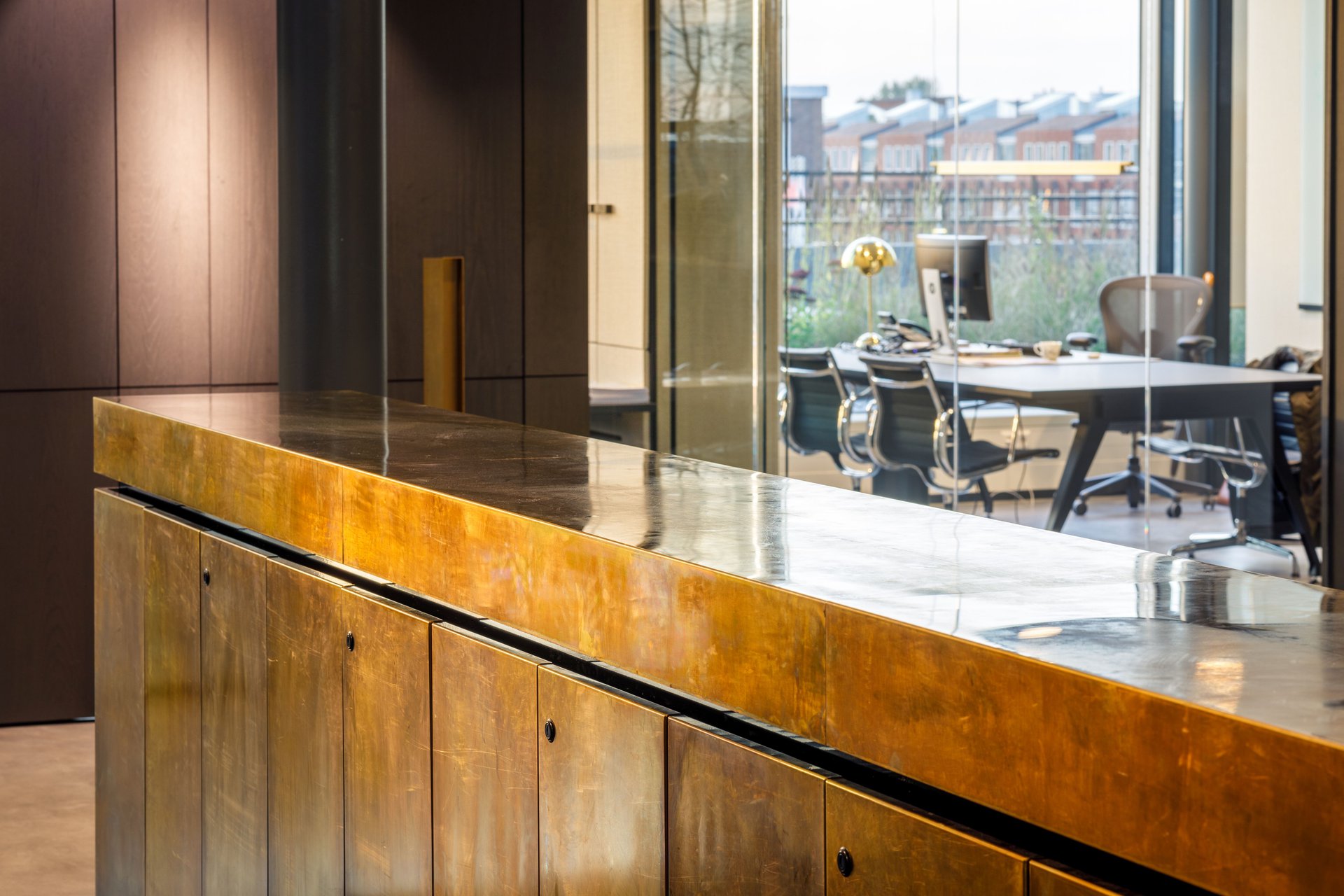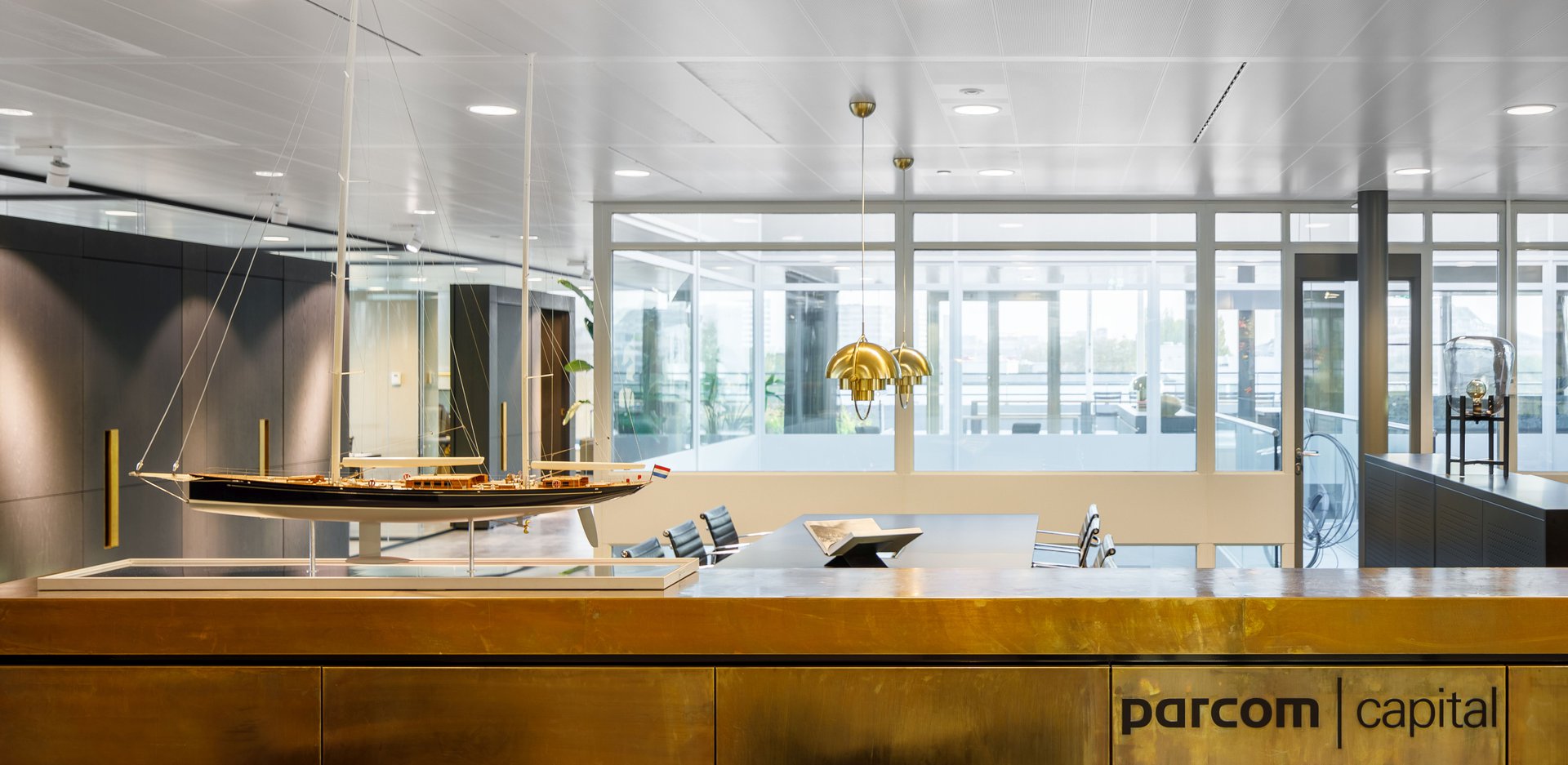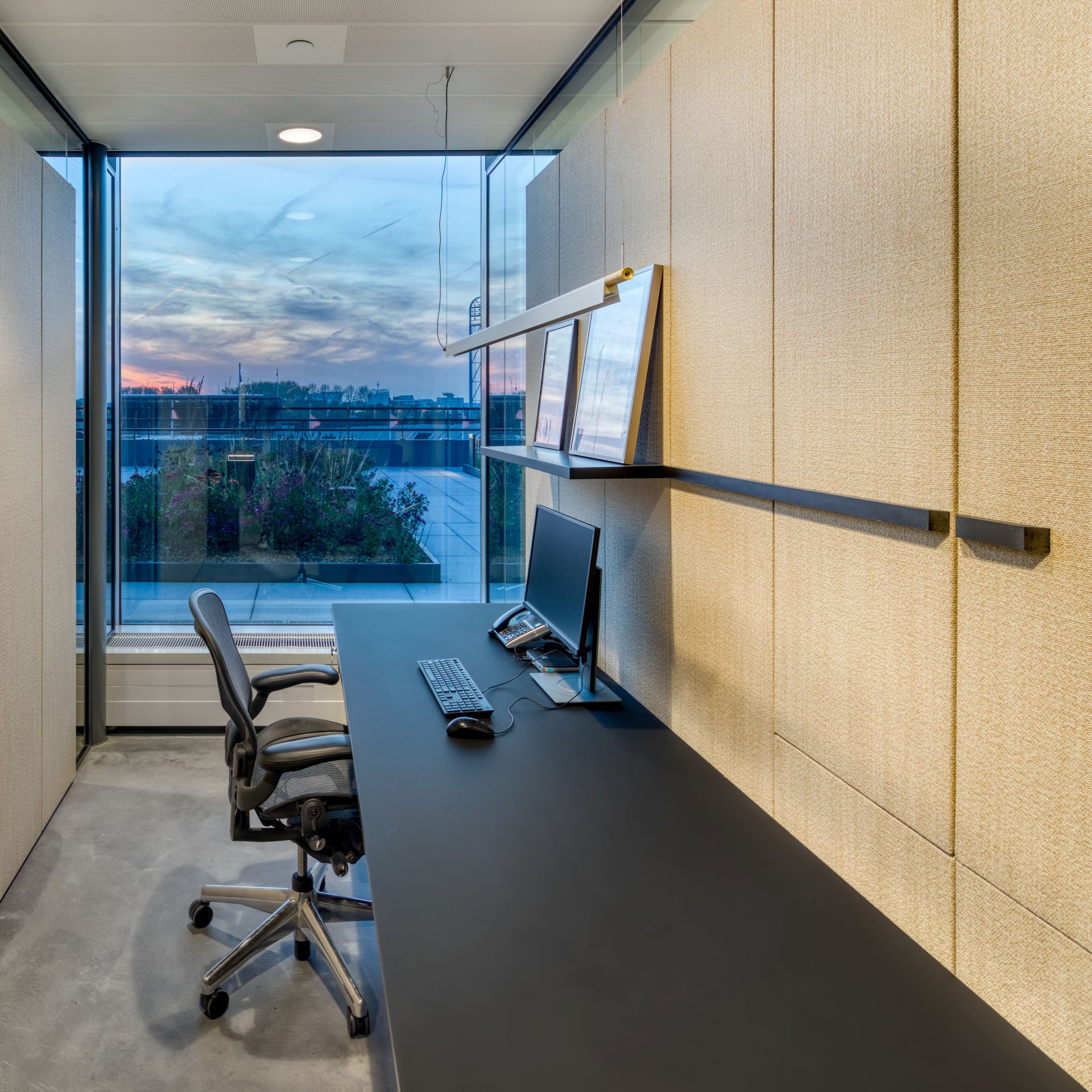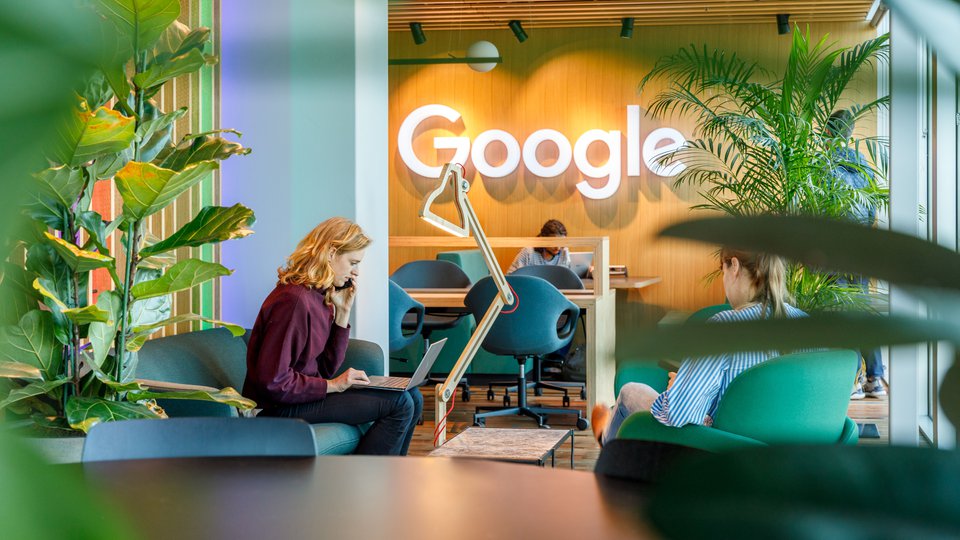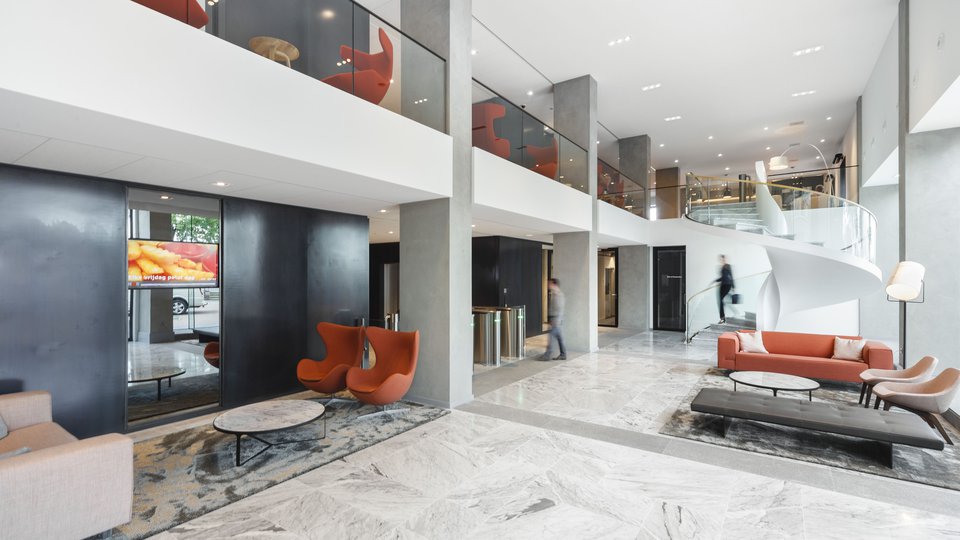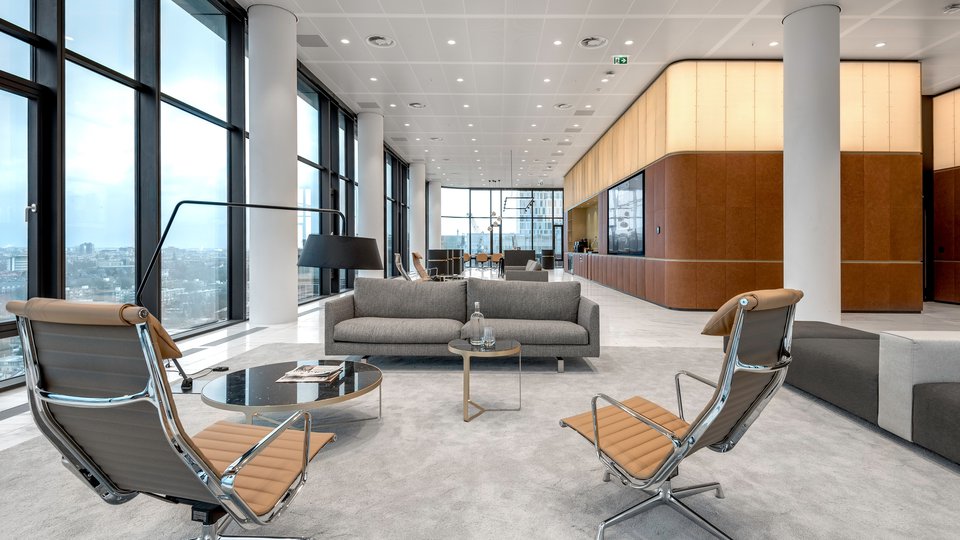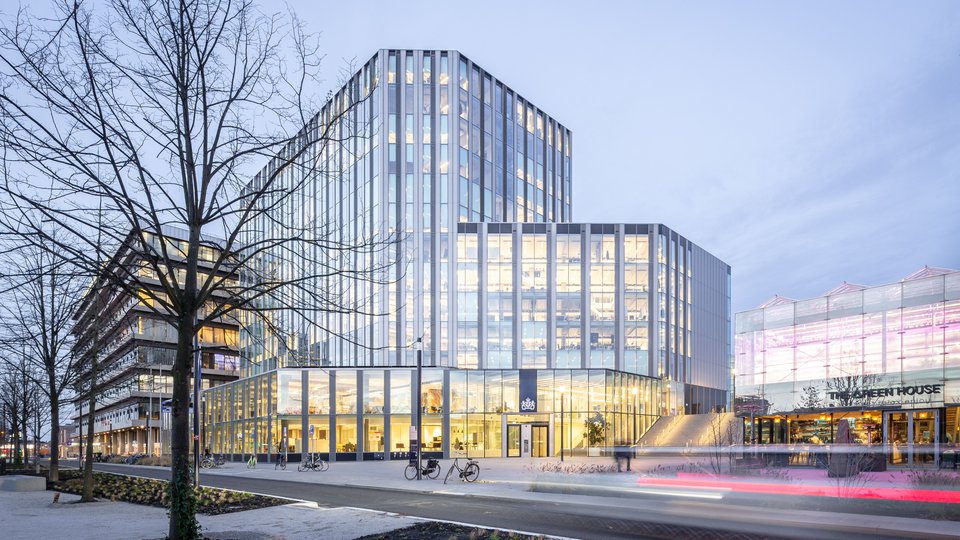| Client | Parcom Capital |
| Location | Amsterdam |
| Square | 800 |
| Timeline | May 2017 - January 2019 |
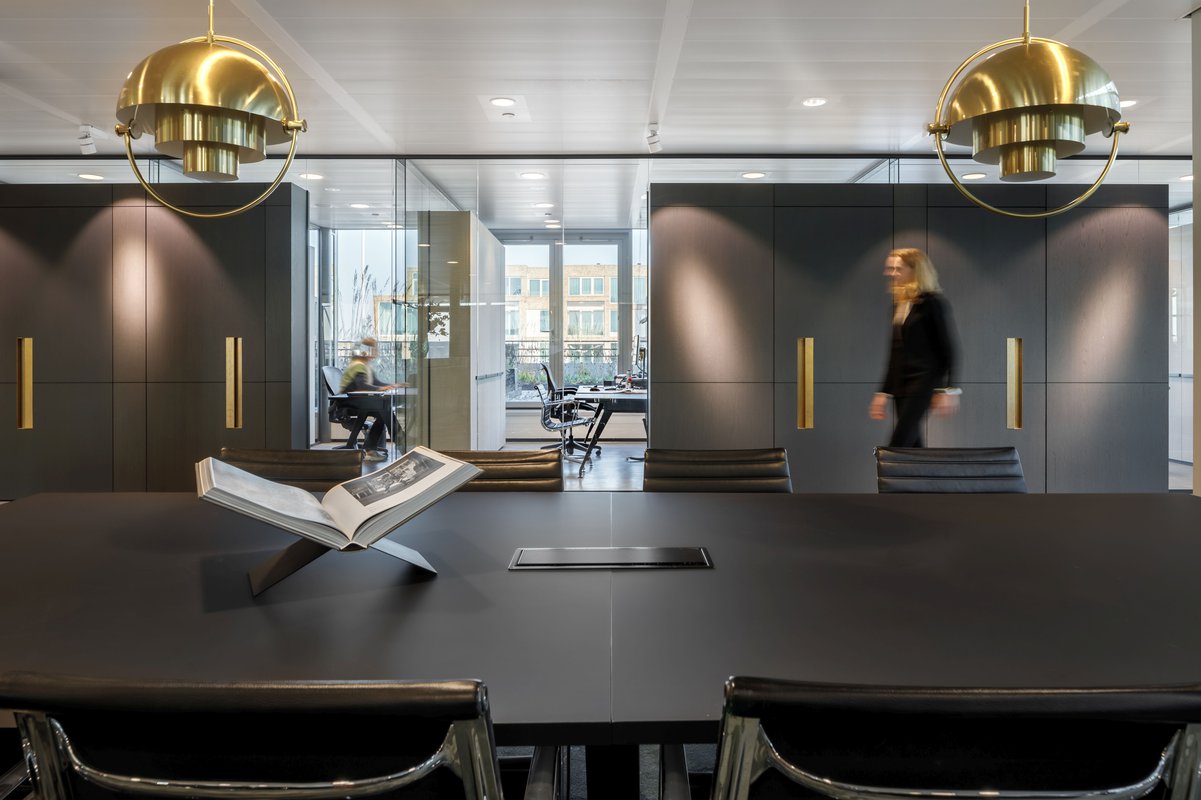
The office for the private equity firm Parcom Capital is tucked away from the busy streets, on top of the renowned 'Second Citroën Garage' in Amsterdam. It is set in an all glazed penthouse, surrounded by a lush rooftop garden. The interior is designed by Fokkema & Partners and features a transparent work environment with varying degrees of privacy. The office has a residential atmosphere, almost like a villa.
Featuring an interplay of faces and lines, the interior design subtly refers to the rational building architecture by Jan Wils. The proportions of the buildings original interior effectively push through to the new top floor. At the same time, the contemporary interior is by no means historicizing. It provides an overwhelmingly warm and bold interior that structures the open plan layout of the penthouse. This resulted in a luxurious work environment to provide an intimate counterbalance to the slightly rough site. The interplay of faces and lines reflects the tension between transparency and privacy. Transparent curtains playfully emphasize the effect.
The concept is materialised in a series of thick wooden slabs, which incorporate cabinets and doors
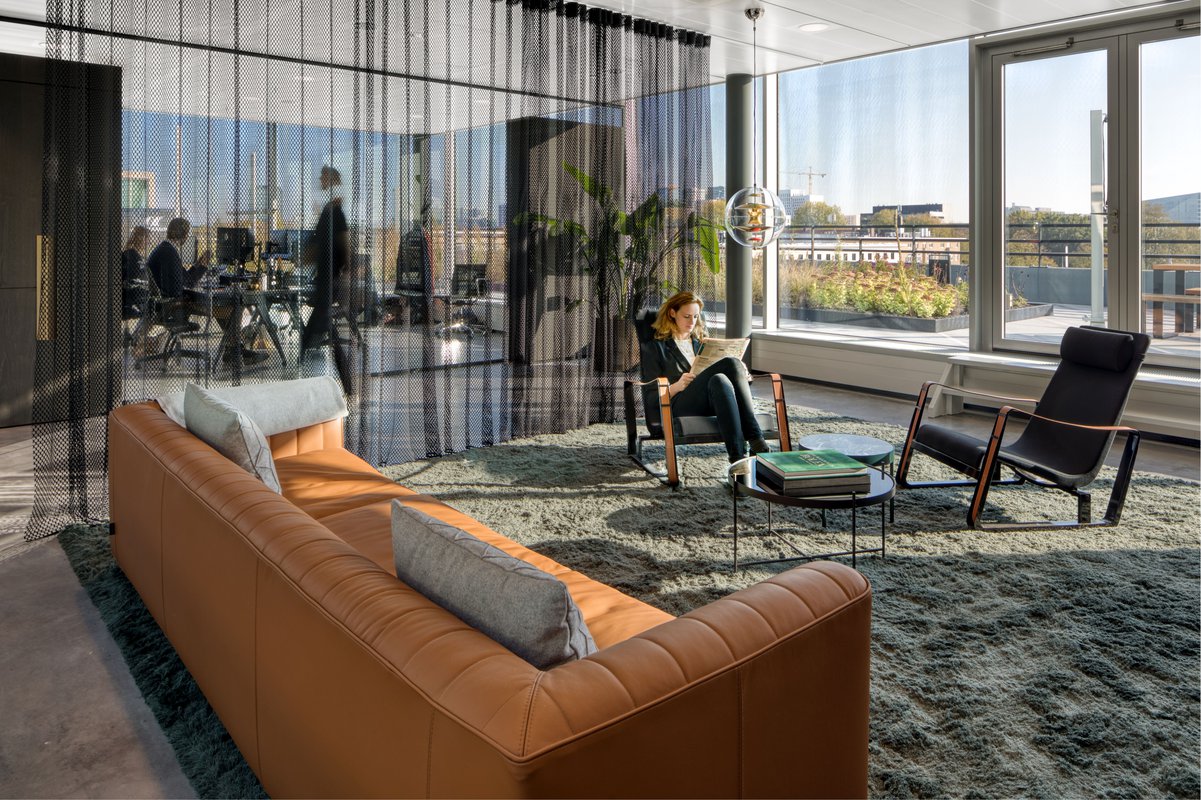
The program includes a large number of private offices along the facades and ample space to meet and relax at its core. A standard partition system was combined with customized joinery elements for doors and cabinets. The original open-plan floor maintains a fluid spatial experience and a natural orientation. It provides privacy in a variety of degrees, depending on the function of the spaces. This concept is materialised in a series of thick wooden slabs, which incorporate cabinets and doors. Glass partitions wrap around, and above these slabs, to provide vistas and secure an airy feel.
The overall materialisation concept is raw and robust, just like the building and its first occupants building sturdy vans. To comfortably accommodate its new user, a variety of warm and textured natural materials are selected such as wool, leather, brass, wood veneer and natural stone. These cover vast areas and entire pieces of furniture with refined detailing for handles and seems. There are no ornaments other than these articulations, which is matched by a careful selection of timeless furniture and lighting fixtures.
Rijnboutt is responsible for the renovation of the Grade A listed building and designed the rooftop pavilion as an extension to the former assembly halls. OKRA designed the lush rooftop landscape.
Photography: Bram Vreugdenhil.
